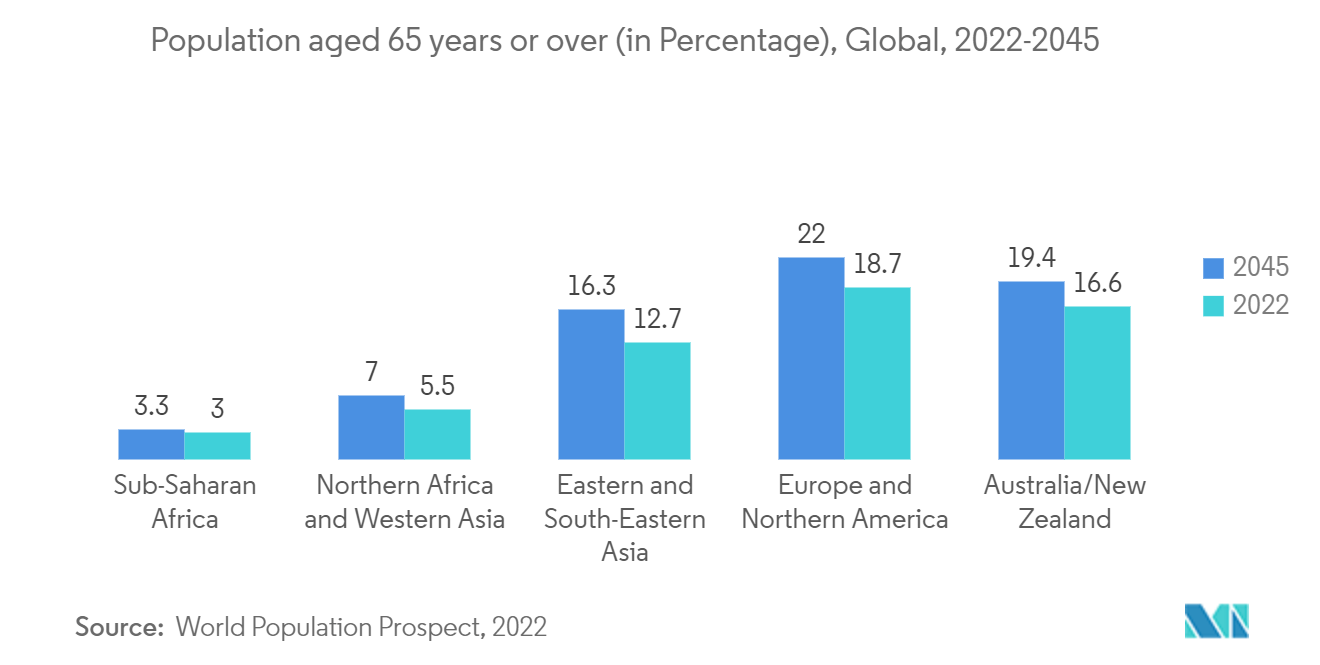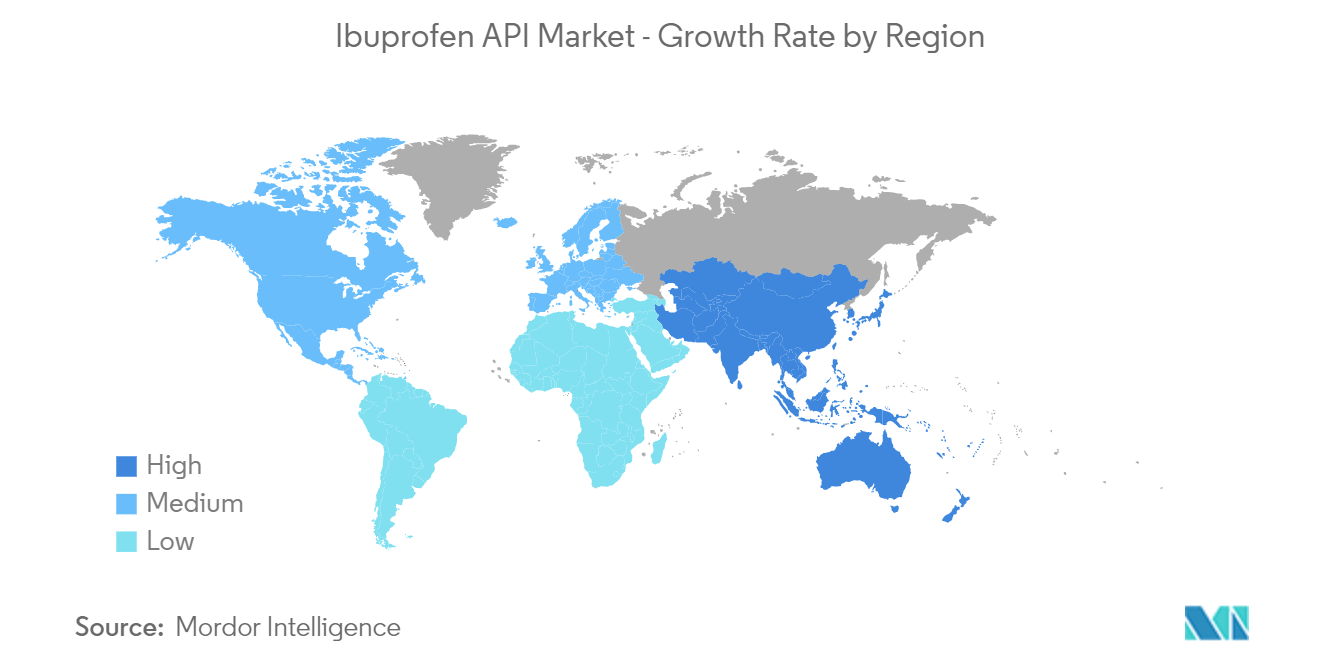Market Trends of Ibuprofen API Industry
This section covers the major market trends shaping the Ibuprofen API Market according to our research experts:
Arthritis Holds a Significant Share in the Ibuprofen API Market
Arthritis refers to the inflammation of a joint. Inflamed joints can develop stiffness, warmth, swelling, redness, and pain. There are over 100 types of arthritis, namely osteoarthritis, rheumatoid arthritis, ankylosing spondylitis, psoriatic arthritis, lupus, gout, pseudogout, etc. Rheumatoid arthritis is an autoimmune disorder that causes pain and inflammation in the body's joints. The segment is anticipated to grow owing to the factors such as the rising incidence of various types of arthritis, product launches, and the increasing geriatric population.
Higher doses of ibuprofen are available on prescription and can be used for rheumatoid or other inflammatory arthritis. In doses of 1,200 mg/day or more, ibuprofen is as effective as aspirin and other nonsteroidal anti-inflammatory drugs (NSAIDs) in treating rheumatoid arthritis. The tolerability and safety of ibuprofen are superior to aspirin and compare favourably with other NSAIDs.
According to the Juvenile Arthritis Foundation Australia 2022 report, juvenile arthritis is estimated to affect 6,000 to 10,000 Australian children aged 1-16 years, making it as common as childhood diabetes and epilepsy. Also, as per the Arthritis Foundation 2022 report, nearly 300,000 children in the United States have juvenile arthritis. 36% of the surveyed children reported severe discomfort, significantly limiting their daily activities. The large number of pediatric patients affected by arthritis require pain relief medications, which is expected to propel the growth of the ibuprofen API market and boost the segment's growth.
Several key market players are adopting strategic initiatives, such as product launches, approvals, and partnerships, adding segmental growth to the ibuprofen market. For instance, in August 2021, Alkem Laboratories in the United States launched ibuprofen and famotidine tablets, used to relieve the symptoms of rheumatoid arthritis and osteoarthritis. Such launches of new ibuprofen medications for pain treatment in arthritis is expected to propel the growth of the ibuprofen market over the forecast period.
Therefore, owing to the factors such as the rising prevalence of arthritis worldwide and company initiatives, the segment is expected to propel during the forecast period.

Asia-Pacific Expected to Witness Significant Growth in Ibuprofen API Market
Due to increasing healthcare expenditure, the Asia-Pacific market is anticipated to witness significant growth during the forecast period. Additionally, the low manufacturing costs in China and India have resulted in a rise in production facilities, attracting pharmaceutical and biotechnological giants to the Asia-Pacific region from across the world.
According to the Elderly in India 2021 report, around 137.9 million people over the age of 60 years were living in India in 2021. The numbers are projected to rise to 193.8 million by the year 2031. As the geriatric population is prone to suffer from several chronic diseases, the anticipated increase in population is expected to fuel the demand for innovative pain relief. This is anticipated to drive market growth over the forecast period.
Also, the strategic initiatives by key market players, such as product launches, partnerships, and acquisitions, have aided the region's market growth. For instance, in September 2022, IOL Chemicals & Pharmaceuticals announced that it is diversifying its active pharmaceutical ingredient (API) and specialty chemicals portfolios and is spending INR 300 crore on capital expenditure to set up a plant in western India. The new plant is aimed to double the company's sales in the next 5 years. The company generates around 30% of its revenues from the commodity API ibuprofen. The company's expansion in India is expected to propel the region's market share during the forecast period.
Therefore, owing to the factors such as the increasing geriatric population in the region and rising strategic initiatives by key players are expected to propel market growth in the area.


